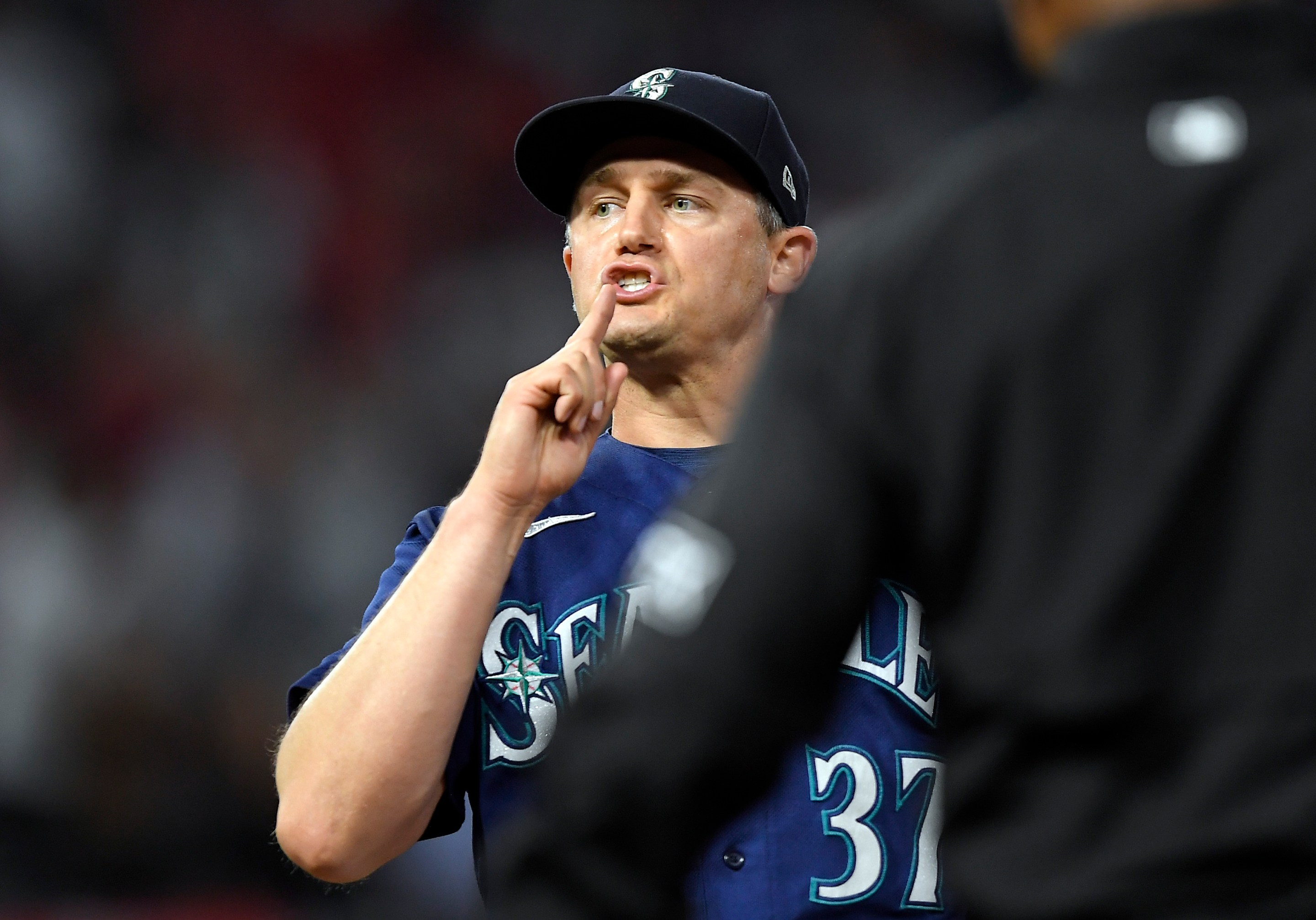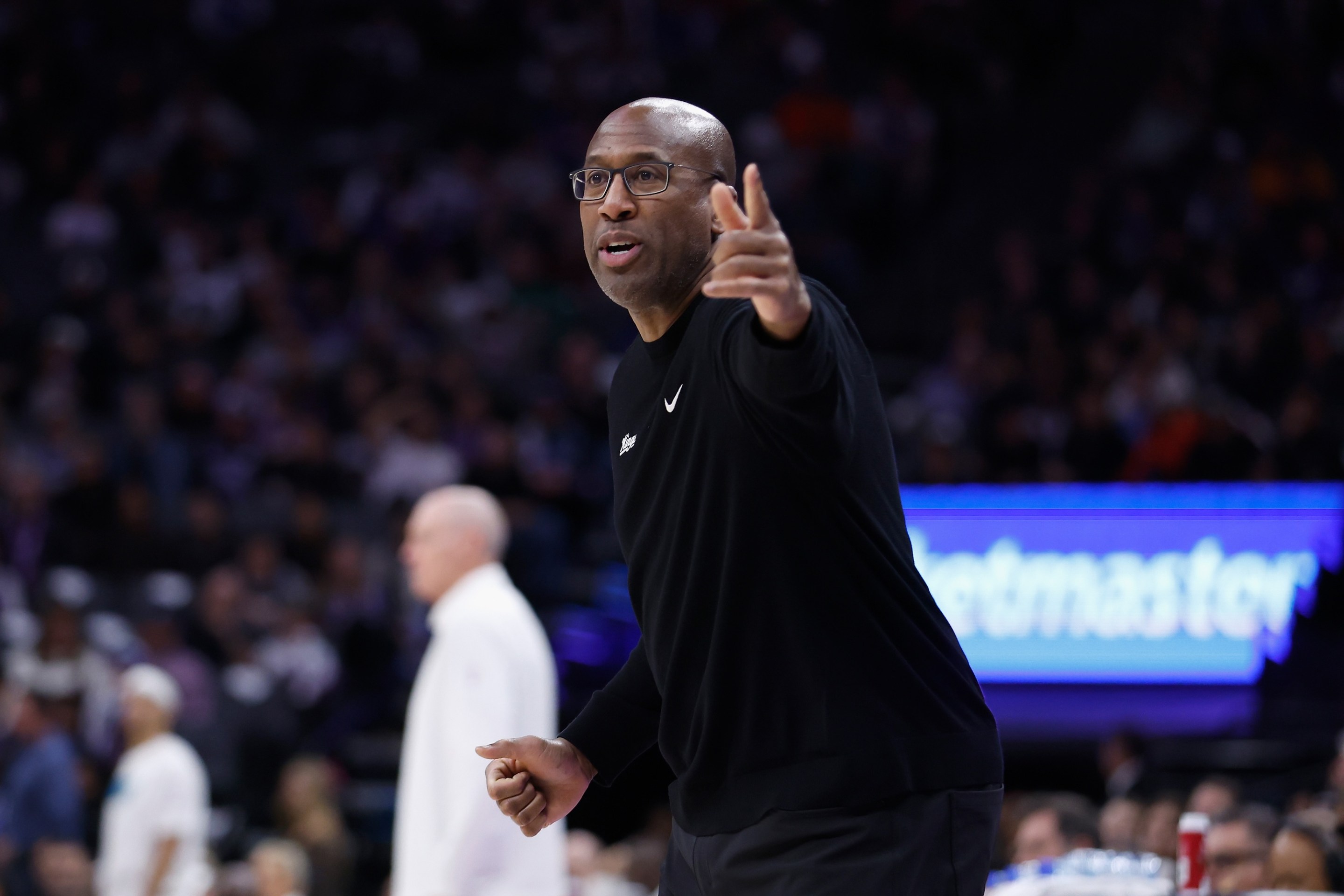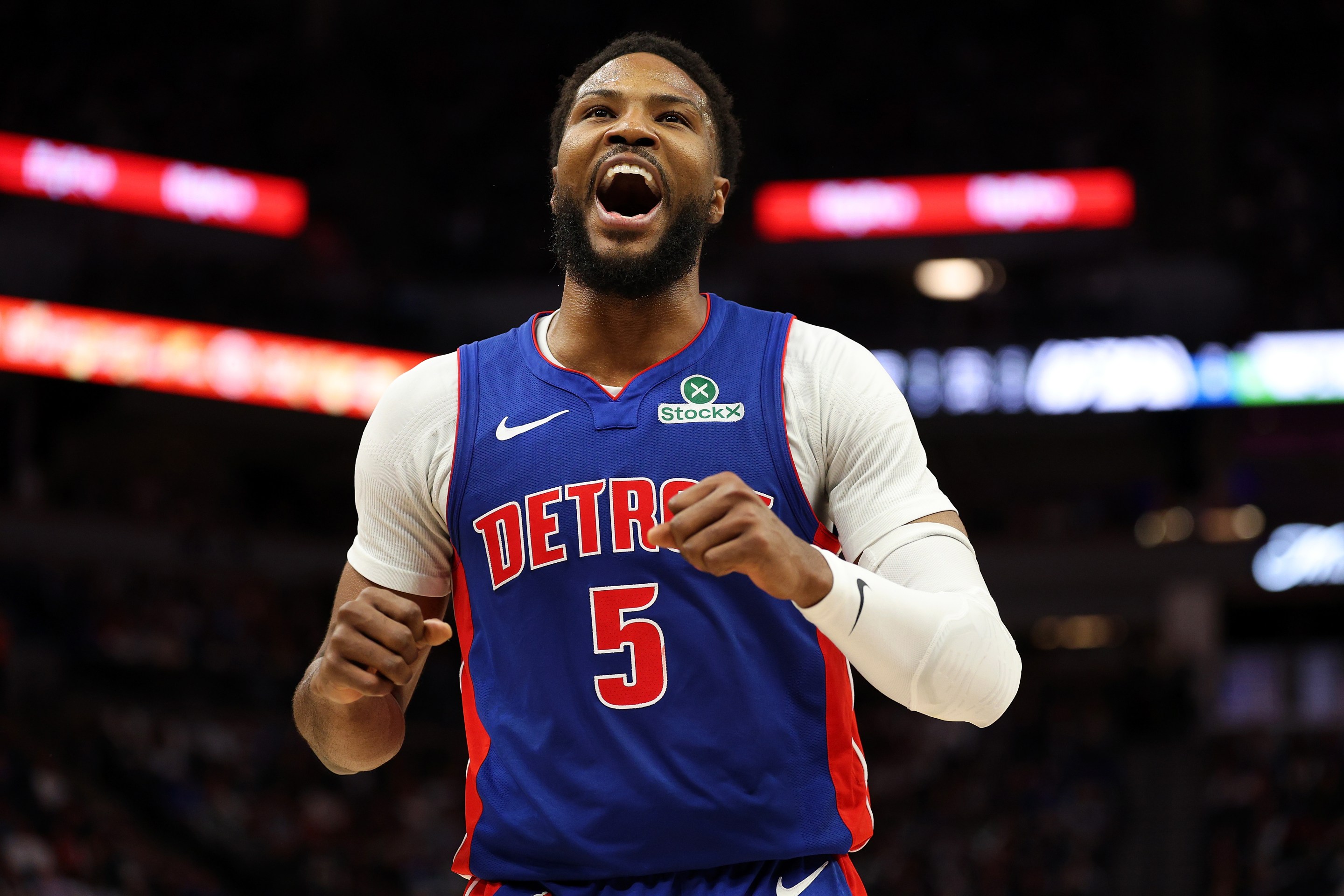It is one of the good and strange things about baseball that teams roughly as good as, if usually a bit better than, the Seattle Mariners can both make the playoffs and make a bunch of mischief there. There were reasons to pull for the Mariners and reasons not to, starting with the fact that, on the merits, they were much closer to the Detroit Tigers, who finished a surprisingly spunky but objectively distant third in the bummy American League Central, than the other flawed teams with which they were competing for a wild card spot until the very last day of the season. The principle is the thing, and as a general rule baseball is not just better but stronger when it is at its dumbest, and at its healthiest and most lovable when it is most like baseball, and where it is least like an arid and abstracted business gambit, or daytime ESPN programming.
The Mariners simultaneously embodied all of the above, but as a team that was quite clearly not designed to contend just yet and which sort of sold and sort of bought at the trade deadline in a way that reflected the hyperactive nihilism of its current administration, they were the best embodiment of that broader chaotic possibility in the playoff mix. Any team that is winning in defiance of both its own executive suite's preferences and the brute arithmetic of run differential is doing something not just right, but profound. Attention must be paid.
The Mariners were very clearly the worst of the four teams competing for the American League's two wild card spots. The Red Sox were in a similar position—marooned in some middle stage of a turnaround, attempting a modified, payroll-neutral, plausible-denial version of buying at the deadline—but their core talent was much better. The Yankees were actively trying, albeit in that weird Late Cashman way that somehow renders them more confounding and vulnerable with every move. The Blue Jays were and are lopsided in crucial ways, but the powerful half was nearly powerful enough.
The Mariners, for their part, seemed built to finish third in the AL West, and by run differential they absolutely should have. This season seemed designed to fulfill stage seven or eight out of 10 or 12, maybe, in the front office's longstanding and intentionally obscure game of Executive Pursuit. They still wound up playing meaningful baseball in the season's last weekend, but even down the stretch, the team behaved in ways that suggested it believed there were things more important than making the playoffs; most glaringly, they opted not to call up Julio Rodríguez, who is probably the best offensive prospect in the minors, and stuck themselves with some high-stakes Jake Bauers at-bats. Had the Mariners done things differently, earlier or later, or just gotten a little bit luckier, their postseason might well have been over after one game instead of zero games. It's still remarkable for having ended as late and as honorably as it did, and for the ways in which the team that stayed in the race brought the front office's abstractions into focus.
To the extent the Jerry Dipoto's Mariners had previously been legible as anything but a mediocre baseball team stuck in a rebuilding project that was easily mistaken for an endless series of righteous right turns, it has mostly been as the sum of his many transactions. The farm system still struggles to produce big-league contributors, but the team's best young players arrived via trade—Ty France and Luis Torrens from San Diego, J.P. Crawford from Philadelphia, Mitch Haniger from Arizona, and perhaps someday also Jarred Kelenic from the Mets—or were picked off the Marked Down Final Reduction rack in free agency. Chris Flexen, the team's best starting pitcher this year, was cut loose by the Mets at just 24 and joined the Mariners after a season in the KBO.
It's probably most instructive to start with Flexen. In a testament to the proudly Jurassic Mets pitching development program, Flexen was fixed almost instantly in the KBO, and those improvements stuck in his first season back in the states. It wasn't rocket science, really—he started throwing his breaking ball down in the zone and his fastball up in the zone, which is what basically every pitcher does now, and which the Mets resisted for reasons having more to do with principle and stubbornness than anything else. In an organization that pushed literally Noah Syndergaard to pitch to contact, Flexen never had a chance. In an organization more willing to play to his strengths, he did.
The same was true for another successful Mets reclamation, reliever Paul Sewald. Seattle didn't change much about the mechanics of how he pitches—Sewald threw from a lower arm slot in Seattle than he did for most of his time with the Mets, but a higher one than he did during the 2019 season—so much as they refined his approach and tried, seemingly for the first time, to put him in a position to succeed. "I think more than anything," he told MLB.com in July, "I'm just using my pitches more correctly than I ever have."
Again, that meant fastballs up and sliders down, and again the dramatic improvement was the result of a basic adherence to contemporary best practices and the time taken to treat a fringe big leaguer as someone with more to offer. Sewald, even with the Mets, had an unusual sweeping slider and a rising fastball that crossed the plate at a unique and off-putting angle; the Mets, bafflingly, instructed him to throw that fastball down in the zone, where it rose and spun up into the worst place a fastball could be. The Mets did this because they believed that relievers are supposed to Get Ground Balls and believed that Sewald, as a reliever, should therefore be pitching down in the zone. The Mariners looked at what Sewald actually did well, encouraged him to keep doing it, and wound up spinning a star-quality season out of a minor-league contract with an invitation to spring training attached. The only relievers in the sport to strike out more batters per nine than Sewald this season were Josh Hader, Aroldis Chapman, Craig Kimbrel, and Devin Williams.
Paul Sewald, 94mph Paint...and pitching with 🔥 pic.twitter.com/1Rhg4yhbuI
— Rob Friedman (@PitchingNinja) September 2, 2021
The Mariners did not just succeed by picking up and polishing players that the Mets mistook for trash, although there are many worse models for success. Casey Sadler was a 29-year-old waiver claim from the Cubs last season who had never pitched more than 27 innings in his previous stints with four big league teams; this year, in 40.1, he allowed just three earned runs. Drew Steckenrider, who bombed out of the Marlins bullpen in 2019 after two decently effective years, resurfaced with the Mariners this year at the age of 30 and was closing games by season's end. Graveman, who was closing before Dipoto flipped him to Houston for the young infielder Abraham Toro, had also leapt into something like stardom in 2020 after making the full-time transition to the bullpen.
There is always a great deal of luck involved where relief pitchers are concerned, and with the notable exception of Sewald none of the Mariners' big reliever reclamations have the sort of strikeout numbers that suggest durable imperviousness to the forces of batted-ball luck. But every one of them was worth much more to the team, in the gnomic decimal-point terms of WAR and in the peace of mind they provided all season long, than was expended to bring them in. These are wins, too.
If there's an enduring reason for optimism in this strange team's strange season, it has less to do with the likelihood that some bold and heroic transaction past or future will finally blow open the team's long-teased era of contention and more to do with the work around the edges that made an elite big-league bullpen out of the sort of arms that can be pulled off the curb on Relief Pitcher Day. There's no material conflict between the two, but the former looks much more like the handiwork of a Dealmaster and the latter is just one of the boring things that good baseball teams reliably do.
It has long seemed like the primary motivation behind all the Mariners' many machinations and moves under GM Jerry Dipoto is to keep on machinating and moving, in the hope that all that busyness might create the impression of a bigger plan at work. It has won Dipoto an extension and a promotion to president of baseball operations, and still very much seems to be the front office's modus operandi.
The players on the team also clearly do not much care for it, or for their boss. Dipoto nearly faced a mutiny after dealing Graveman at the deadline; when local media asked Kyle Seager, who has been with the organization since 2009, whether he had received any indication that the team might pick up his option for next season, he said that he hadn't spoken to his GM in "probably four years ... not even passing by in the hall."
Dipoto is not the only high-handed weirdo with a GM job, although he may be among the most high-handed and weirdest; he is certainly not the only one to have turned a non-contending team into what amounts to a serialized business school project. Some trades are won, some trades are lost, but even this decently refined process is fundamentally difficult to trust because it mostly seems to replicate and repeat itself. That it works some percentage of the time does not mean that it actually does what it is supposed to do. The Mariners just missed the playoffs, but they also just missed the playoffs for the 20th straight season.
A team can't build around a bullpen, really. There's too much variance, intrinsically and just in terms of who winds up there, and as such there's no guarantee that the Mariners will get anything like what they got out of this year's pen going forward. But what made this miracle of a bullpen—sweating the small stuff, sharpening the edges, doing the sort of ordinary, difficult work that makes teams good, and then getting lucky on top of all that—is not just luck. The splashy stuff that the GM gets credit for won't work unless the smaller stuff does, too.







